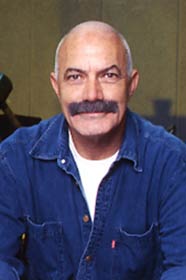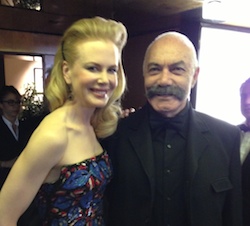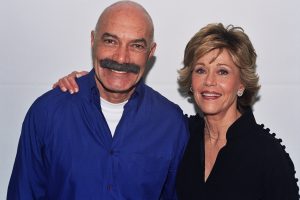



Alfred Hitchcock: The Masterpiece Collection
Universal DVD
Disc 2: Shadow of a Doubt (1943)
Fourteen of Hitchcock’s brilliantly directed stories of crime, espionage and intrigue have been digitally re-mastered for this comprehensive 15-discs boxed set. An array of never-before-seen footage offers film lovers an exclusive glimpse behind the scenes of some of Hitchcock’s most elegantly suspenseful films.
The arrival of this collection is timed to the highly anticipated release of “Alfred Hitchcock Presents, Season One, which features all 39 TV episodes of the Emmy Award-winning murder mystery series.
An extraordinary tribute to the achievements to one of Hollywood’s most enduring talents, the Hitchcock Masterpiece Collection includes an original 36-page collectible book and exclusive bonus disc, showcasing materials never before available on DVD.
Original production notes, photos, drawings, trailers, new documentaries, alternate endings, additional scenes and a peek at some of the legendary storyboards on which Hitchcock meticulously plotted each shots of his films round out this distinguished collection.
The DVD includes a special feature, “Beyond Doubt: Hitchcock’s Favorite Film,” which examines what many critics consider the director’s first masterpiece and one of his half a dozen best films.
“Shadow of a Doubt” was nominated for one Oscar, Original Story to Gordon McDonell, who lost the award to William Saroyan for “The Human Comedy,” a more sentimental and conventional portrait of small-town America.
Hitchcock admired Thornton Wilder’s play “Our Town” so much that he asked Wilder to write a script, affording the playwright an opportunity to continue his exploration of small-town life. It was “gratifying to me,” Hitchcock said, “to find out that one of America’s most eminent playwrights was willing to work with me and, indeed, that he took the whole thing quite seriously.” Hitchcock acknowledged his gratitude to Wilder in the credits, an unusual tribute and “emotional gesture,” because he was “touched by his qualities.”
The whole project assumed special significance for Hitchcock, as he explained: “In England, I’d always had the collaboration of top stars and the finest writers, but in America, things were quite different. I was turned down by many stars and by writers who looked down their noses at the genre I work in.” “Shadow of a Doubt” thus became one of Hitchcock’s most personal and favorite films.
In “Our Town,” the druggist plays the role of an insider-outsider. Detached from the proceedings, his comic, often wry comments examine Grover’s Corners from the outside. Emily is also able to “step aside,” and look back more objectively on her life and the town. The druggist and Emily provide some tension and perspective, though despite the town’s divisions, it is still unified and marked by one dominant way of life. The only outsider-outcast is the church’s organist who, as a frustrated artist, doesn’t really belong. A loner with a drinking problem, he isn’t integrated. In “Shadow of a Doubt,” Wilder and Hitchcock use the character of the outsider-outcast more explicitly as a narrative device.
“Shadow of a Doubt” features prominently among the decade’s films about the “other side” of small-towns. It probes the two faces of small towns, the bright and the dark sides. The British master of the suspense thriller surprised many of his colleagues by choosing to direct such a subject, and by his careful recreation of small-town Americana.
Based on a story by Gordon McDonnell, the screenplay was written by Thornton Wilder, Sally Benson, Alma Reville, and Hitchcock (uncredited). The film serves as a companion piece to Wilder’s “Our Town.” Sally Benson’s collection of stories, published in the New Yorker, served as basis for Vincente Minnelli’s MGM musical, “Meet Me in St. Louis” (l944), another slice of Small-Town Americana.
The movie was shot in Santa Rosa, chosen by Hitchcock and Wilder after careful consideration of other towns. The house’s owner was so pleased that his house had been chosen that he painted it–to look better–reflecting his and the public’s image of small towns as clean, neat, and beautiful. Amused by it, Hitchcock insisted on repainting the house “dirty” all over again.
The strategy used by Hitchcock is that of juxtaposition. The narrative contrasts two protagonists, Uncle Charlie (Joseph Cotten) and his niece Charlie (Teresa Wright), who share the same name, and are also connected by telepathy and love. The narrative first introduces Uncle Charlie, lying in bed in his room, and then switches to his niece, showing her in the same position in her bed. The young Charlie finds her family life dull and bland. “We go along and nothing happens,” she complains, “A family should be the most wonderful thing in the world, but this one has gone to pieces.”
The Newton family is composed of Joseph (Henry Travers), his wife Emma (Patricia Collinge), and their three children: Charlie, Ann (Edna Mae Wonacott), and Roger (Charles Bates). Ann is an unattractive and bespectacled girl, the bookish, precocious type. In l943, her character had not yet become a stock type in small-town films, as she would become a decade later, in a movie like “Picnic,” played by Susan Strasberg. Roger is more agreeable, but his character is much less developed than his sister’s.
Unlike other films of that era, “Shadow of a Doubt” acknowledges explicitly the significance of social class. The film’s best scenes take place over dinner, when the whole family sits around the table and talks. The story is set prior to the age of television, which will forever change family habits of eating, socializing, and watching TV.
Embodying aristocratic values, Uncle Charlie represents the old order, whereas the Newtons uphold more democratic middle-class values. He and his sister are nostalgic for a bygone era of glamour and elegance, at the turn of the century. Lehar’s melodic “The Merry Widow” is played on the soundtrack, and the image of elegantly dressed people waltzing to its tunes recurs several times. “Everyone was neat and pretty then, the whole world,” Uncle Charlie remarks, “not like the world today.”
The intimate bond between Uncle Charlie and sister Emma causes tension, particularly when they reminisce about their happier childhood. Excluded from their talks is Mr. Newton, who feels inferior and insecure, having come from a lower social class than his wife. Emma has clearly lost her looks and the glamour she had possessed in her youth. To help support the family, she now needs to work. If she’s enchanted by her brother, it’s because he reminds her of better life in their past.
Uncle Charlie is an outsider in every sense of the term. He represents a threat to the unity and happiness of this nuclear family, not only in his later attempt to kill his niece (when she finds out he is a murderer), but also by his very presence, causing tension between Mr. and Mrs. Newton.
The residents of Santa Rosa seem to be friendly, if slightly eccentric. Herbie Hawkins (Hume Cronyn), the Newtons’ next-door neighbor, is a mother-fixated man whose hobby is to read and solve murder mysteries. The other members, the telegraph operator, the helpful policeman (played by Hitchcock himself), detective Jack Graham, and the librarian, all go about their routines in an agreeable manner.
But one also gets a notion of frustrated people, whose life has been anything but happy. In a crucial scene, set in a cocktail bar, the waitress, who went to high school with young Charlie, observes: “I’d just die for a ring like that.” She refers to the ring that Uncle Charlie had given his niece, stolen from one of his victim-widows.
The most interesting aspect of Shadow of a Doubt is its image of the nuclear family, in ideology and practice. Seeking information to incriminate Uncle Charlie, detective Jack Graham (Macdonald Carey) arrives in the house under the excuse of wanting to interview a “representative American family.” But no one likes the idea of being a member of an “average” family; Emma protests that they are not a typical family. Throughout the film, the words typical, average, ordinary, and representative abound, reflecting the inherent tension between living a quiet, ordinary, but fulfilling middle-class life, and one that’s just ordinary and bland. Most of the characters are associated with bland ordinariness.
The villain in “Shadow of a Doubt” is an original character by standards of 1940s pictures. Uncle Charlie is a murderer with a (Fascist) mission, killing old, ugly widows, whom he describes as “useless women, drinking the money, eating the money, smelling of money.” Handsome, intelligent, and charming, Uncle Charlie gets the public’s sympathy, unlike other Hitchcockian villains who are disturbed and psychopathic (like Norman Bates in “Psycho,” who’s sympathetic up top a point).
Significantly, unlike “Psycho”‘s Norman, Uncle Charlie’s violent acts are never seen; they had occurred before the story begins. Moreover, unlike Anthony Perkins’s Norman Bates, Joseph Cotten possesses the looks and manners of a suave leading man. Hitchcock refuses to portray heroes and villains in black or white, using instead shades of gray to portray both the villain and the heroes.
The narrative structure is symmetric. It begins with the arrival of a train, with Uncle Charlie aboard, in Santa Rosa and ends with his departure. Hitchcock uses straightforward symbolism: a huge cloud of black smoke (evil) signals the arrival of train, whereas in its departure, the smoke is lighter, signaling a sense of relief.
Though the film is set for the most part in Santa Rosa, the earlier images of Philadelphia’s urban life are quite depressing. In the first scene, Hitchcock’s camera pans across huge industrial buildings to convey Philadelphia’s coldness and anonymity. The two detectives wait for Uncle Charlie on a deserted street, and Uncle Charlie lives in a shabby room.
But the movie draws a more important contrast between the small-town as a garden and small-town as hell, similar to the contrast in many Western films between the garden and the desert. “You’re just an ordinary little girl living in an ordinary little town filled with peaceful, stupid dreams,” Uncle Charlie tells his niece, “You live in a dream. How do you know what the world is like The world is a hell.” “Do you know the world is a foul sty” he continues, “Do you know if you ripped the fronts off houses you’d find swine” Uncle Charlie first disrupts, then completely shatters his niece’s illusions about small-town life: “You live in a dream world, and I have brought you nightmares.”
The duplicity motif functions on many levels of the film. The title itself, “Shadow of a Doubt,” bears double-edged meaning, referring to Charlie’s growing suspicions that her uncle is a murderer and to Charlie’s (standing in for ordinary girls) doubts about her life. “We’re sort of like twins,” she observes early on. “The same blood runs in our veins,” confirms her uncle. At the end, Uncle Charlie, attempting to get rid of his niece, is brought down by her, an act that symbolizes the triumph of virtue against evil within herself. Nonetheless, the film suggests that Charlie may continue to love her uncle, despite his attempt to kill her, an ambiguous note that might have eluded audiences at the time.
The duplicity motif becomes most explicit in the detective’s observation at the end: “It’s not so bad, but it seems to go crazy now and then, like your Uncle Charlie.” The world is basically right, Hitchcock appears to be saying, but “It just has to be carefully watched.” This sequence’s ironic tone is accentuated by Hitchcock, framing it in front of the church, where the minister eulogizes Uncle Charlie as a respectable citizen. But despite formal resolution, narrative closure (Uncle Charlie’s death) and happy ending (Charlie’s romance with the detective), the anxieties operating beneath the surface register more effectively than the normal facade. While the movie restores social order and normalcy, it doesn’t undermine the shaky bases and the great strains it takes to maintain that order.










